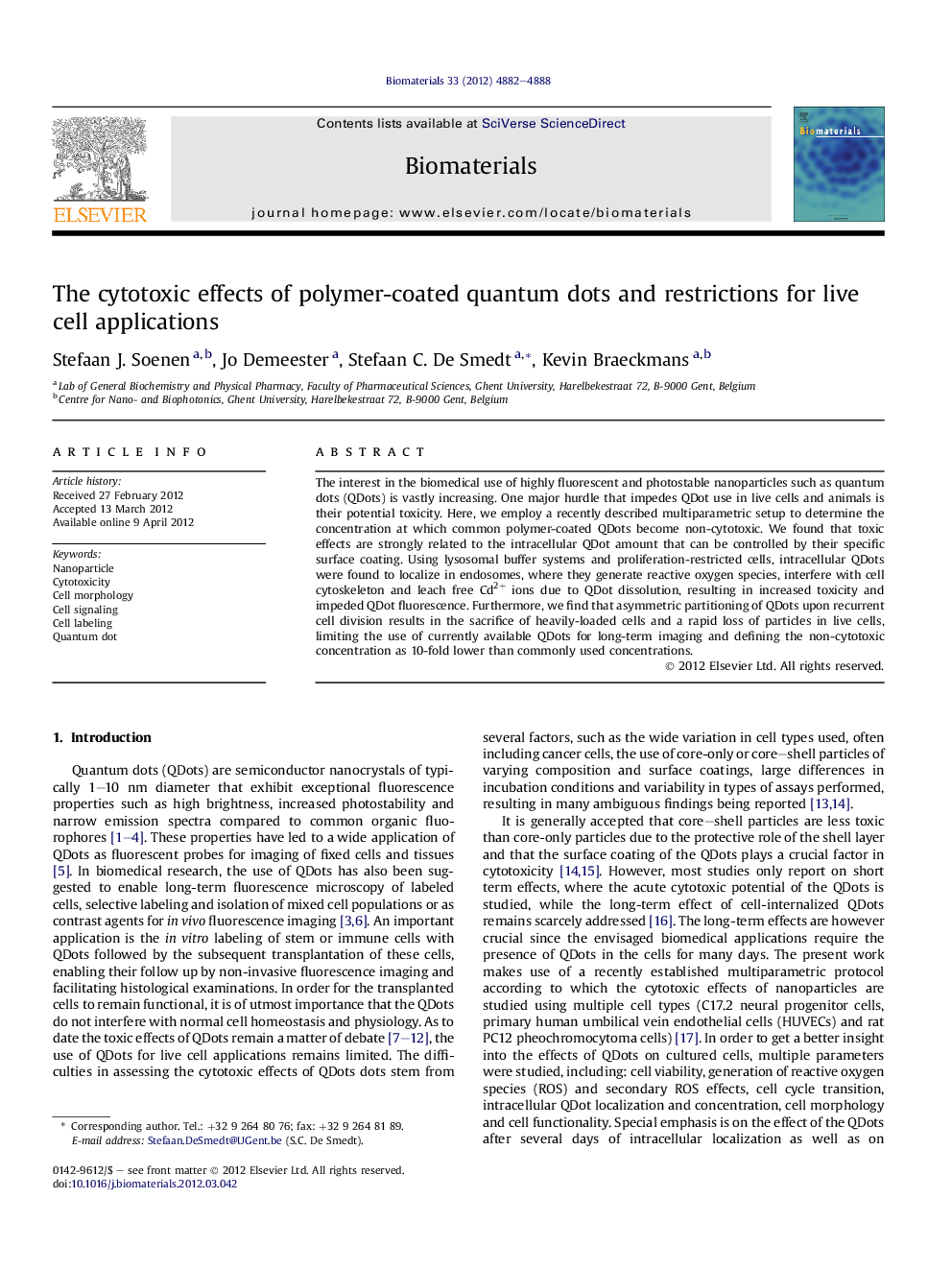| Article ID | Journal | Published Year | Pages | File Type |
|---|---|---|---|---|
| 7279 | Biomaterials | 2012 | 7 Pages |
The interest in the biomedical use of highly fluorescent and photostable nanoparticles such as quantum dots (QDots) is vastly increasing. One major hurdle that impedes QDot use in live cells and animals is their potential toxicity. Here, we employ a recently described multiparametric setup to determine the concentration at which common polymer-coated QDots become non-cytotoxic. We found that toxic effects are strongly related to the intracellular QDot amount that can be controlled by their specific surface coating. Using lysosomal buffer systems and proliferation-restricted cells, intracellular QDots were found to localize in endosomes, where they generate reactive oxygen species, interfere with cell cytoskeleton and leach free Cd2+ ions due to QDot dissolution, resulting in increased toxicity and impeded QDot fluorescence. Furthermore, we find that asymmetric partitioning of QDots upon recurrent cell division results in the sacrifice of heavily-loaded cells and a rapid loss of particles in live cells, limiting the use of currently available QDots for long-term imaging and defining the non-cytotoxic concentration as 10-fold lower than commonly used concentrations.
